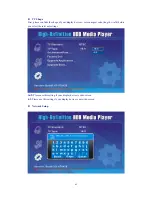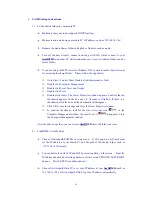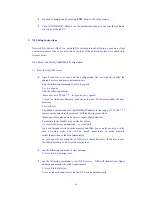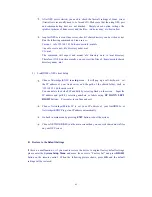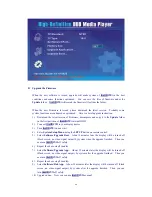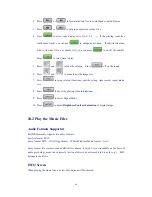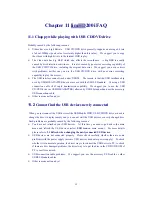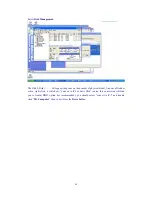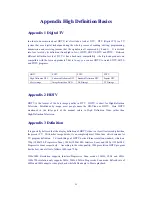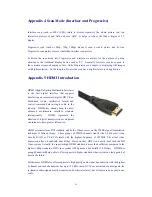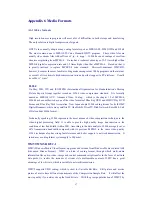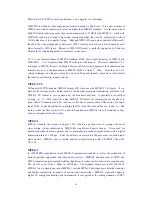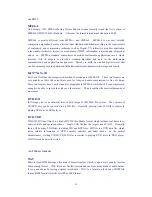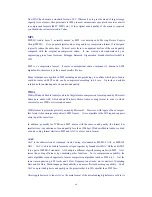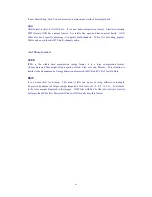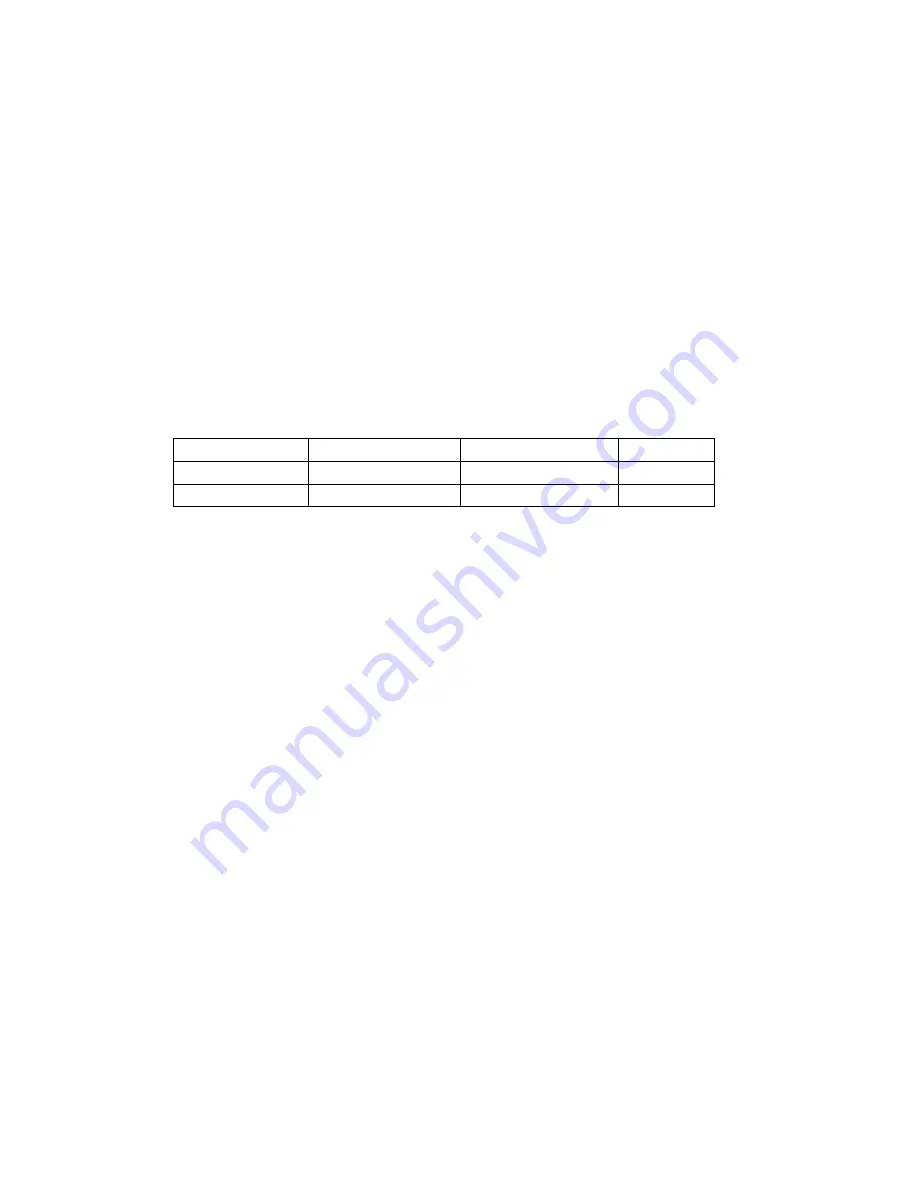
55
Appendix High Definition Basics
Appendix 1 Digital TV
In order to know more about HDTV, let’s first take a look at DTV. DTV (Digital TV) is a TV
system that uses digital technique during the whole process of sending, editing, programming,
transmission and receiving (means that the signals are all expressed by 0 and 1). It is divided
into four levels by its definition (from high to low): HDTV, EDTV, SDTV and PDTV. Between
different definition levels of DTV it has a backward compatibility - the high-end products are
compatible with the low-end products. That is to say, you can use HDTV to watch EDTV, SDTV,
and PDTV programs.
HDTV EDTV
SDTV
PDTV
High Definition DTV
Enhanced Definition DTV
Standard Definition DTV
Popular DTV
Movie image
Image better than DVD
DVD image
VCD image
Appendix 2 HDTV
HDTV is the format of the best image quality in DTV. HDTV is short for High-Definition
Television. Established by usage, most people name the HD-Video as HDTV. Here HDTV
mentioned in the latter part of the manual refers to High Definition Video rather than
High-Definition Television.
Appendix 3 Definition
It is generally believed that the display definition of HDTV video is at least tree times higher than
the present TV. With richer image details, it can completely meet Video fans’ strict demands for
TV program definition. To reach this goal, HDTV derived three resolution standard, which are
720p (1280x720, Progressive Scan), 1080i (1920x1080, Interlace Scan) and 1080p (1920x1080,
Progressive Scan) respectively. According to the video quality, 1080p resolution HDTV program
has the best visual effects, follows 1080i and 720p.
1920x1080 Resolution supports Interlace/Progressive Scan mode of 24Hz, 30Hz and 60Hz.
1280x720 resolution only supports 24Hz, 30Hz, 60Hz in Progressive Scan mode. Refresh rate of
60Hz and 30Hz adapt to video playback, while 24Hz adapts to Movie playback.


